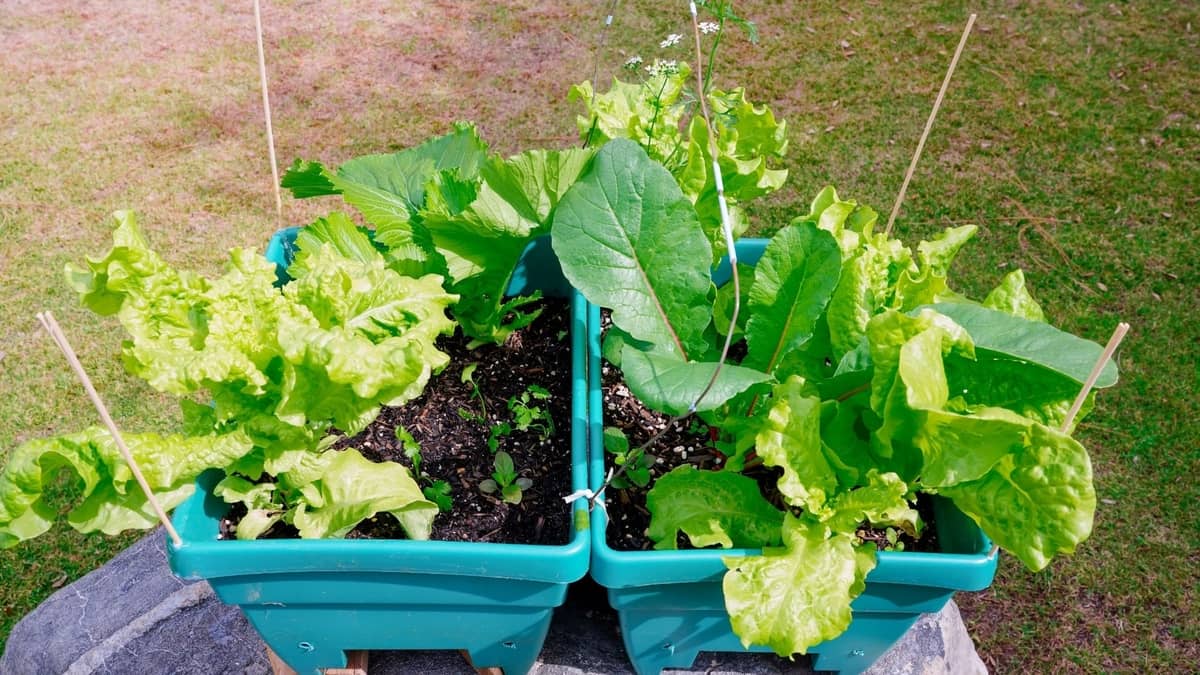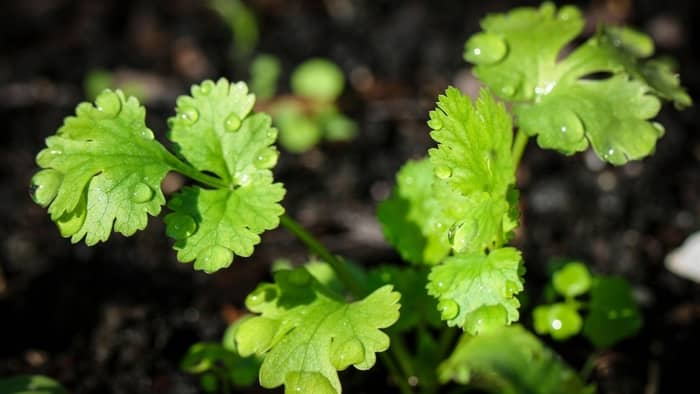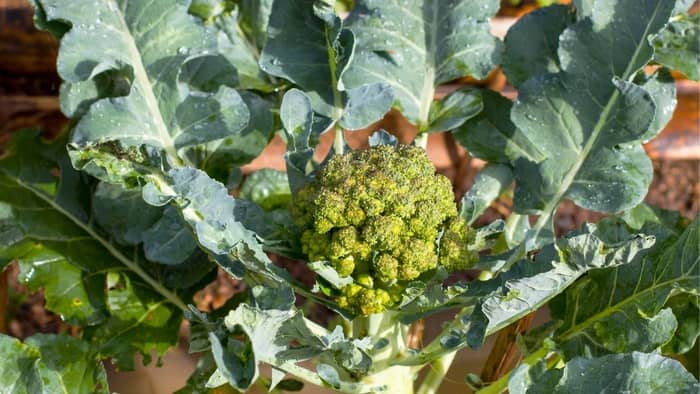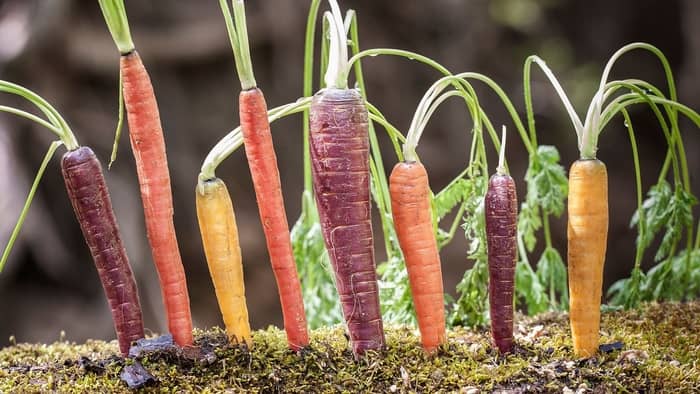Last Updated on March 6, 2022 by Guillermina
Growing vegetables indoors is a rewarding, healthy, and fun hobby. Most of the vegetables require little maintenance and are ready to harvest within a short period of time.
There is no need to let cold weather or a lack of outdoor garden space stop you from growing and enjoying delicious food. All you really need is a sunny window and the patience to wait for your future products to sprout and grow!
Below you will find some of the best ideas for growing vegetables indoors. Therefore, let’s get started!
8 Ideas To Get You Started
Herbs
Although technically not a vegetable, different types of herbs are among the most common choices for gardening novices. The best thing is that as long as you treat them properly, they will grow just like in the garden.
Mediterranean herbs such as rosemary and thyme prefer dry soil and heat. In contrast, some other herbs such as cilantro, parsley, and mint enjoy cool, moist conditions. Therefore, before planting inquire about the conditions they prefer and enjoy the harvest.
As for planting, you can plant them as seeds on your own or buy a starter plant from your local store.
Scallions
What a burst of flavor and versatility scallions can add to your dishes, right? They are super rich in B-complex vitamins as well as minerals such as iron, copper, magnesium, and calcium. In addition, scallions are a great choice for all those who want to start growing vegetables indoors. They are low-maintenance, quick-growing, and are therefore ideal even for beginners.
As for the growing process itself, you can grow them from seeds, or regrow them from the scraps of scallions that you used while preparing a meal. To regrow them, simply place them in a cup of water in a sunny spot.
Microgreens
Microgreens are most often found in fancy restaurants, where their price is quite spicy, but did you know that they are easy to grow at home? This group of vegetables consists of miniature greens from radishes, mustard greens, chard, broccoli, and lettuce.
Microgreens are a delicious addition to various salads and are perfect to use as a garnish. Put them in a shallow container in a sunny place and enjoy the fruits of your labor.
Onions
It may sound strange at first, but onions are one of the most popular vegetables for growing indoors. This can be very useful because they are an essential part of almost every dish. It is most often used as topping to pizza, mixed into a different type of soup, or straight-up battered and fried.
Onions can be grown at home year-round using seeds or scraps from other onions. Most importantly, the planter is big enough for a bulb to spread out and grow deep into the soil.
Peppers
Peppers are grown indoors for eating but also as an ornament, country décor. To successfully cultivate these colorful, tasty veggies, try to place them in a sunny place and give them a lot of love. With good conditions and the right amount of care, peppers can thrive year-round. Interestingly, some of them can survive up to 5+ years.
Read more about The Best Hot Peppers To Grow Indoors.
Tomatoes
If you are thinking of growing vegetables indoors, consider tomatoes. Although they are best suited for outdoor growing in warm climates, they can be grown indoors even during the winter. Accordingly, you can turn the fruit-producing season into a year-long affair rather than an end-of-summer harvest.
Most important of all is to provide them with a sunny place, large enough containers, and stakes or cages to keep the branches upright as they grow.
Carrots
Growing carrots indoors in containers solve the problem of growing in heavy, rocky soil that can often end in failure. Since carrots are a root vegetable, they do best in long containers, such as a window box filled with fine-textured, stone-free soil.
Choose varieties such as Romeo, a round Parisian-type carrot, or true baby carrots like Little Finger or Adelaide and enjoy.
Mushrooms
Although mushrooms are a fungus and not typical vegetables, they are still very possible to grow indoors. In fact, they are a great choice precisely because they thrive in cool, dark, and damp environments.
If you are thinking of growing these vegetables indoors, click here and read our article.
Abstract
For many people who live in big cities, a garden is seen as a hot commodity, and having a vegetable garden is often imagined as a pipe dream. Gardening can be an excellent form of therapy, but unfortunately, it is not available to everyone equally. Therefore, many find an alternative in growing vegetables indoors.
Learning how to grow vegetables indoors is actually quite simple and is perfect for everyone, even for gardening novices.
If you have any questions, please let us know in the section below.
FAQs
What Do You Need To Grow Vegetables Indoors?
Here are the things to consider if you decide to start growing vegetables indoors: Light - low, medium to high, the amount depends on the type of vegetables you grow.
Soil - organic potting mix for veggies.
Containers - opt for those who have drainage holes and saucers or drip trays
Humidity - 40 to 50%.
Temperatures - the range is usually depending on the type of vegetables you grow.
Water - the amount of water and frequency of watering depends on each species individually.
Fertilizer - according to the needs and requirements of each vegetable.
Is It Worth Growing Vegetables Indoors?
Of course, it is! There is probably a no better thing than enjoying dishes you have prepared from your own grown vegetables.
What Vegetables Grow Fast Inside?
If you need vegetables that grow and ripen in a short period of time, feel free to opt for one of these:
Radishes
Green onions
Lettuce
Carrots
Spinach
How Much Light Do You Need To Grow Vegetables Indoors?
Plants need photosynthesis to survive, and there is no photosynthesis without light. Accordingly, the plants need about 14-16 hours of sunlight. However, it very much depends on the species itself.
In the absence of natural sunlight, you can always make up for it with the artificial growing light.





